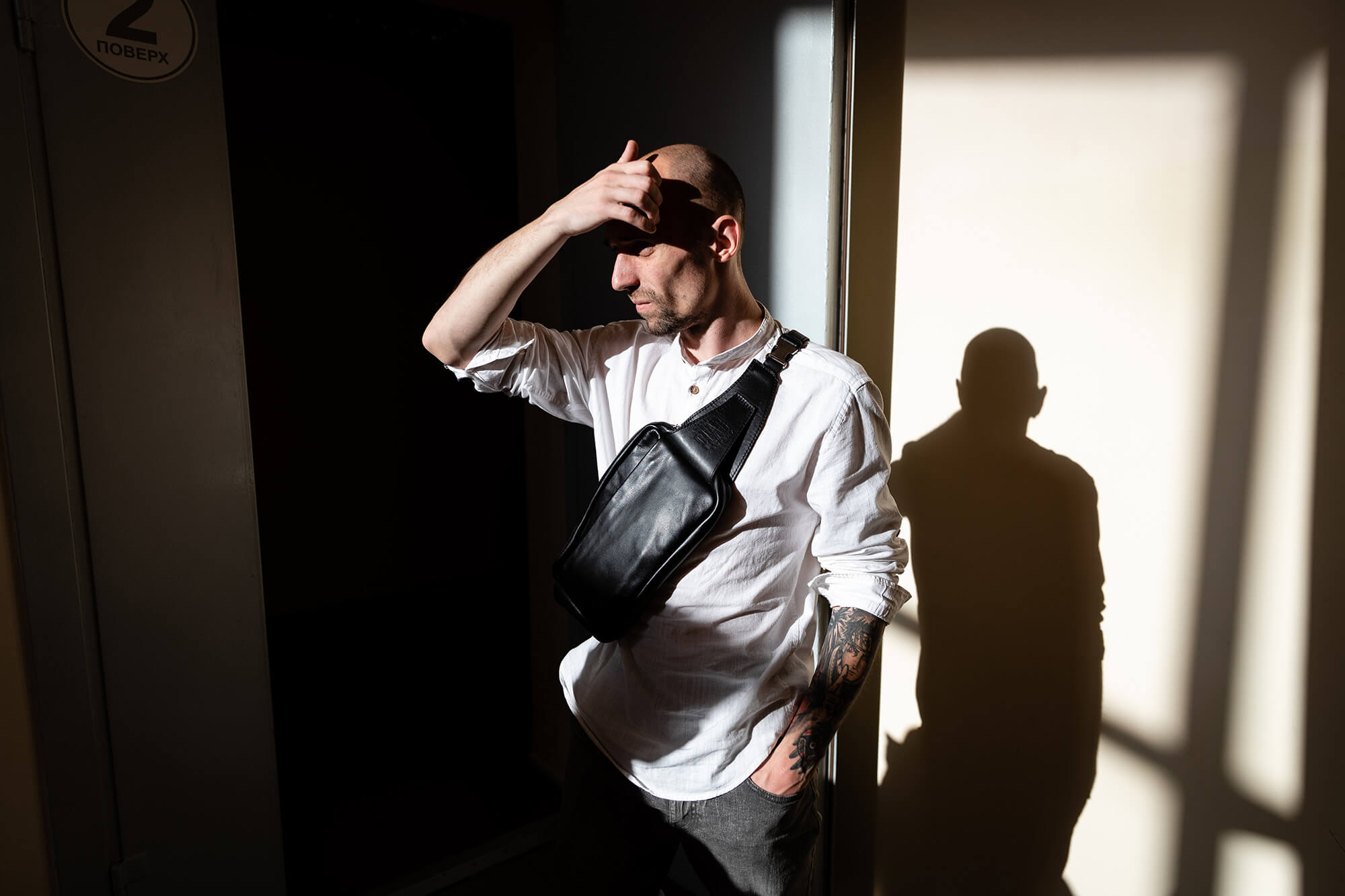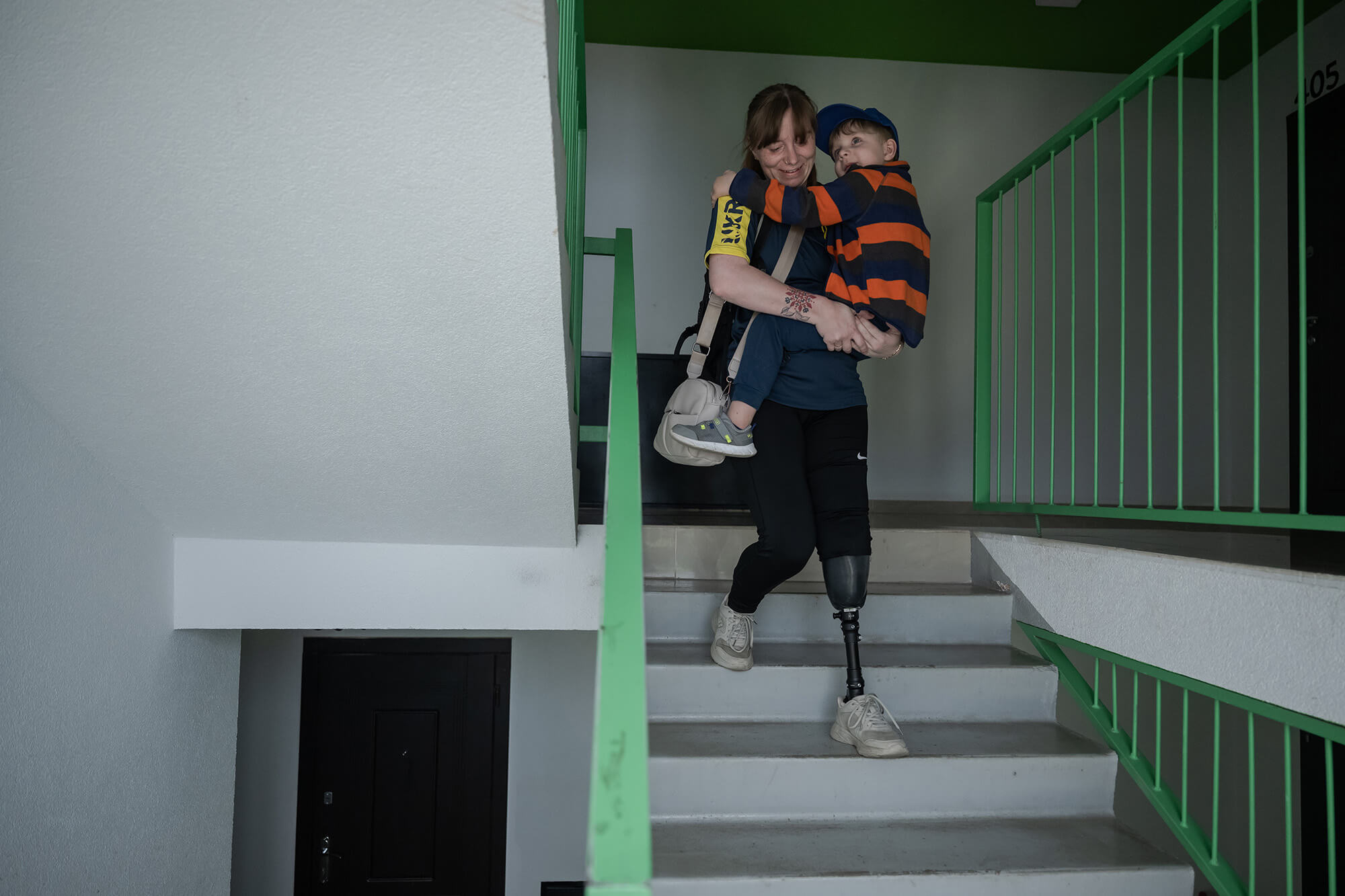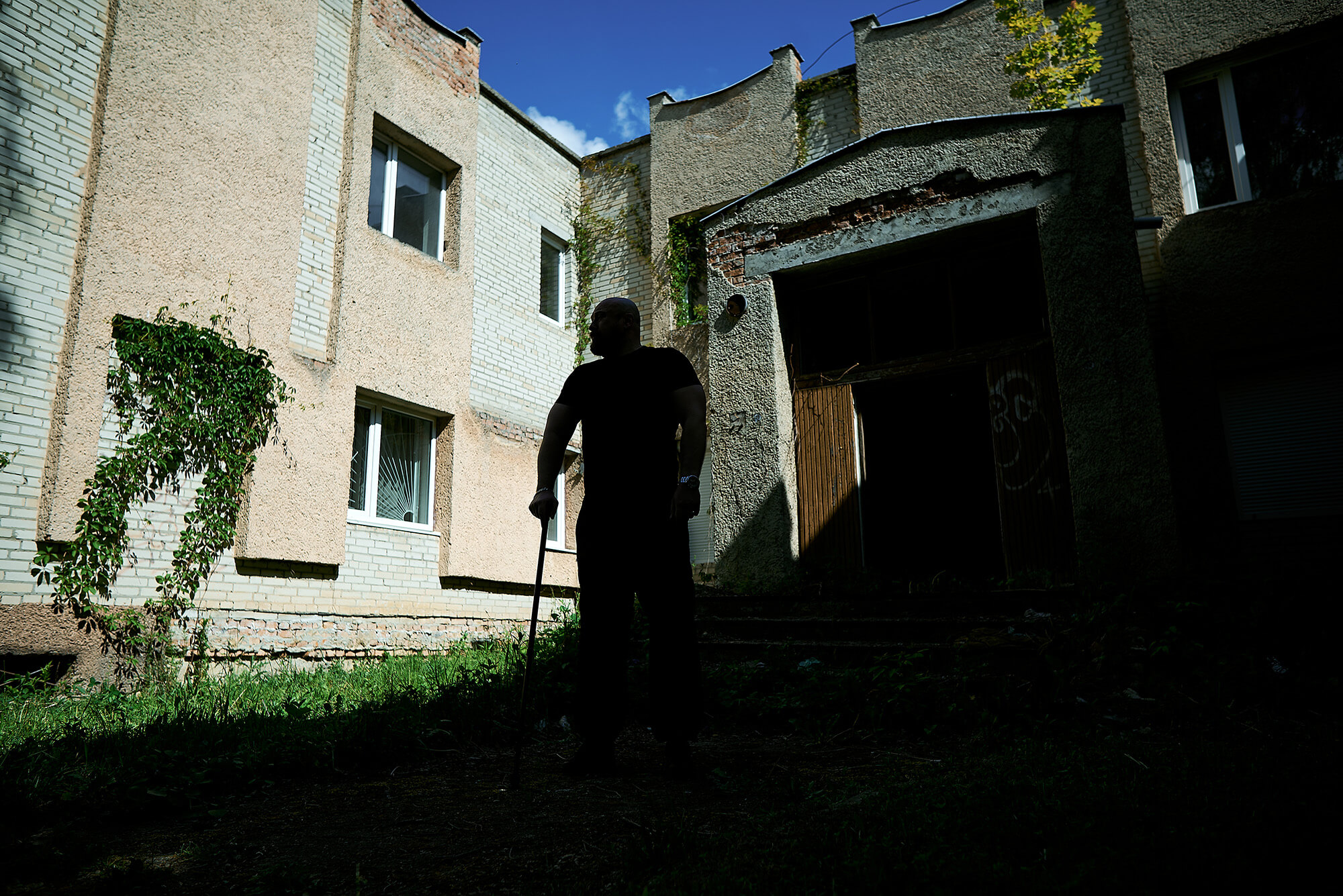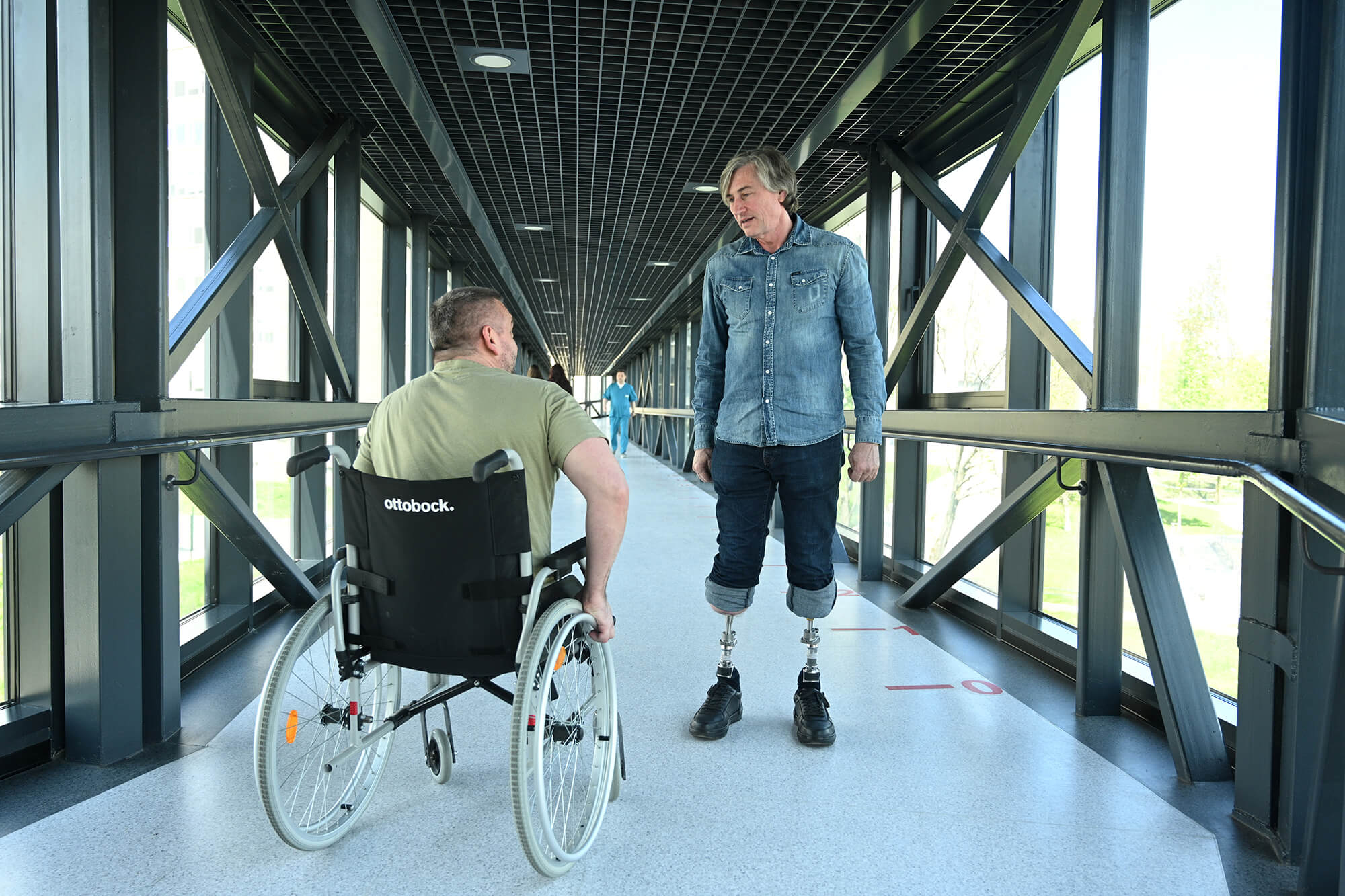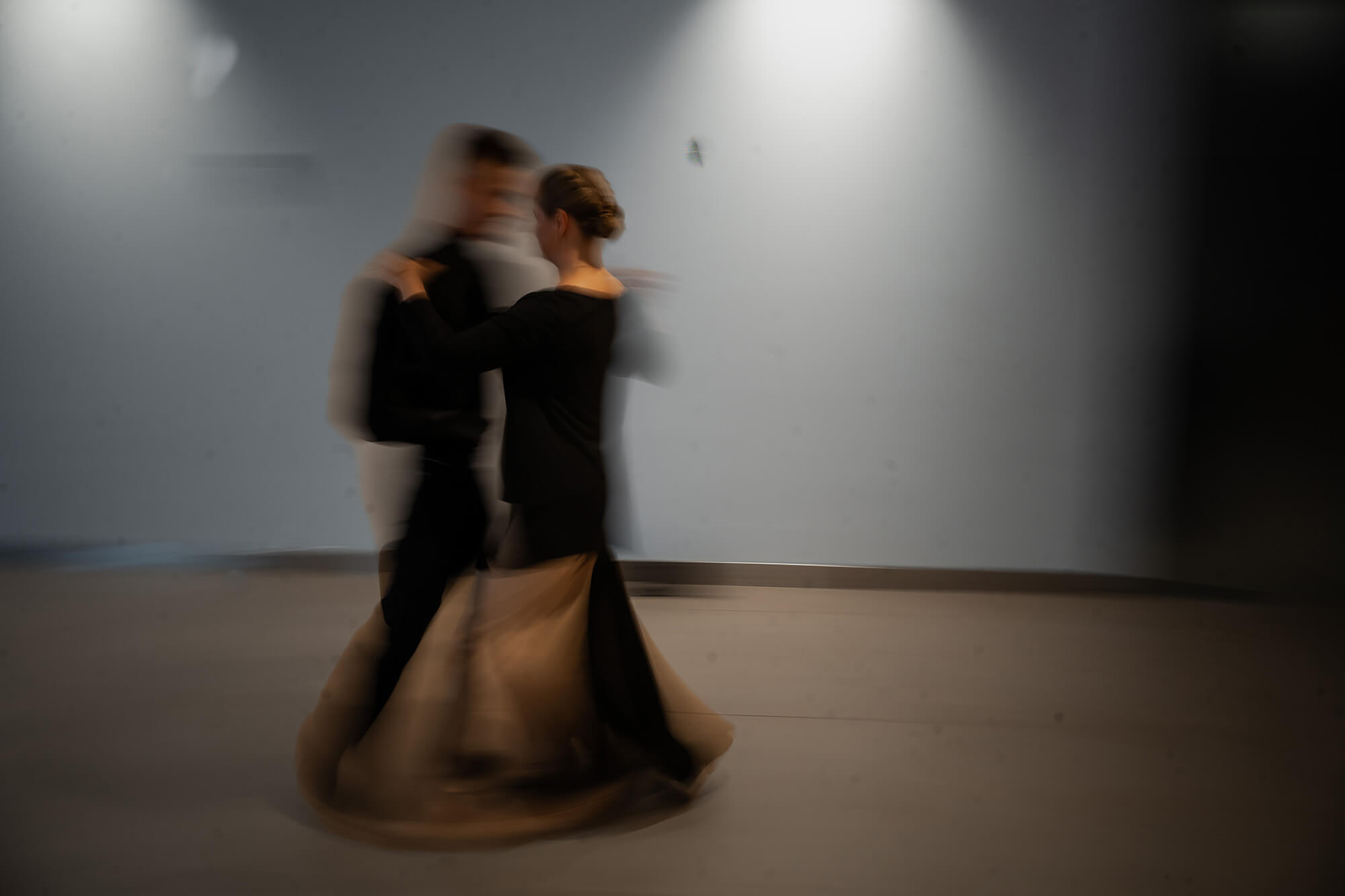
Get Ready to Fight
[This publication was created with the support of The Ukrainians Media readers].
A towering man walks in the dark down the deserted Povitroflotsky Avenue in Kyiv. The wind tries to knock him off his feet, yet the man in military camo presses on. It’s 5:21 a.m. The date is February 24, 2022.
About a month before the start of the full-scale Russian invasion, the Commander-in-Chief of the Armed Forces of Ukraine, General Valerii Zaluzhnyi, moved into new premises near the General Staff building in Kyiv. In January, Zaluzhnyi gathered his assistant officers and said, “Not all of us believe that the Russians will attack, but I do. Evil cannot be negotiated with, so get ready to fight.”
At 5 a.m. on February 24, when Russia attacked 24 out of 25 Ukrainian regions from the air and launched a land offensive simultaneously from the north, south, and east, the Commander-in-Chief of the Armed Forces was in the same premises. In the days leading up to the attack, he had barely slept a wink. Instead, he tried to calculate all of the possible actions that Russia might take and to remember whether he had missed anything.
Ready to help
“Tell them we have a meeting with ‘Volunteer,’” hears the guard from a man in the driver’s seat of an already-rusted SUV.
Left from the tall gate, which is a continuation of a long concrete fence decorated with barbed wire, is a security desk. We turn off the engine right in front of it. The sun, as if intentionally, is blinding us and illuminates the inside of the car with little reflections.
The front line is close, but everything is by the book here—“the book” meaning, in this case, military regulations. There is a turnstile that requires magnetic cards to pass, a lifting gate, and almost a dozen guards. All of them look impeccable: young, clean shaven, tanned, and with buzzed hair. In line with military regulations, they all wear full, crisp uniforms; they haven’t even rolled their sleeves up, even though they surely feel the heat of the summer underneath.
“Just a minute,” says the guard. “Please park next to the rest of the cars on the right.”
The man in the driver’s seat is Andriy Rymaruk. He is a former sergeant of the 53rd Separate Mechanized Brigade. We took this work trip to the Donetsk region together as representatives of the “Come Back Alive” fund, which is the biggest charity organization in Ukraine helping the Ukrainian army. Andriy is responsible for the fund’s cooperation with the military. I handle communications highlighting this cooperation.
It was the summer of 2018. ATO (Anti-Terrorist Operation) was recently renamed into JFO, short for Joint Forces Operation. There were also changes to the military command, with Serhii Naiev becoming the new commander of the operations in the East of Ukraine and Valerii Zaluzhnyi, current Commander-in-Chief, becoming his deputy, as well as the chief of staff. The deputy was the one we came to meet that day. “Volunteer” was his callsign.
“Why is he called ‘Volunteer?’” I ask.
“Haven’t you heard the story of when Zaluzhnyi came to help us out at the training camp? says Andriy. “There were a lot of posts on Facebook then; the whole lot of us were ‘protesting.’”
In the spring of 2016, the 53rd brigade, where Andriy served as a recon sergeant at the time, returned to the rear after a six-month-long tour to the frontline. During that tour, the servicemen took part in the liberation of Zaitseve village in the Donetsk region. After all the mud and blood in the trenches, they expected to have at least some “civilization” when they arrived at the rear. Yet instead of beds with linens, they were faced with mud and rain-soaked tents where their new base was supposed to be. This is because the state was not able to provide all units created after 2014 with decent base camps, so the 53rd and 57th brigades of the Armed Forces of Ukraine had to live at the training grounds instead, which were not ideally set up for living.
“There were heavy rains, and whoever was in charge did not even think to put pallets on the ground as flooring,” the veteran explains.“No conditions. So whether you are on the frontline or back at home—same shit. First, we asked the commanders kindly, but nobody gave a damn. Then we kicked up a lot of fuss and even planned to march on Kyiv. I didn’t even know how that could have turned out. And then a commission of senior officers was sent to us. Fucking wow.”
According to an unspoken military rule, a commission does not come to solve a problem but to find who’s guilty and dispense punishment. Zaluzhnyi was part of that commission. Back then, he was still a colonel, but he was different from other officers that soldiers of the 53rd were used to. Instead of looking for scapegoats, he looked at what he could do. Horrified by the living conditions, he apologized to the soldiers for what happened.
“Most of us were mobilized soldiers. Most officers we met before had a stick up their asses. Illogically strict, doing everything by the book. But he was normal. Of course some harshness, but he was a human.
We talked, we shook hands, and things began to change. We stayed at the training camp, and the conditions there became livable after Zaluzhnyi left.”
Zaluzhnyi got his “Volunteer” callsign even before the incident with the 53rd brigade. He had a reputation in the military as someone always ready to help.
Getting in touch with officers in high ranks is usually not an easy feat. Many of them consider talking in official capacity to civilians as below them, and they rarely stoop to the level of battalions, companies, or platoons. On the one hand, generals should not micromanage. That’s what military ranks are for. On the other hand, as Andriy explains, even in the military, you have to stay human.
“Zaluzhnyi knows that well.” He smiles. “You’ll like him. He is very cool,” stresses Andriy as we stand inside one of the buildings behind the concrete fence, waiting to meet with Zaluzhnyi.
The Commander-in-Chief’s office in the JFO area is small, about the size of a 30 m2 apartment. It consists of a corridor, lined with linoleum, a WC, and an office with a door leading to a small room with a bunk.
Next to the window is a table covered with papers. A lot of space on that table take up radios and corded telephones by which Zaluzhnyi, as a Chief of Staff, receives brief reports from other officers. The door to his office is almost always open.

“Tea or coffee?” Zaluzhnyi asks as soon as we come inside.
Andrii says he’d like some coffee.
“With sugar or not? Sit down, I’ve turned the kettle on.”
I met many more “human” generals after talking to the current Commander-in-Chief on that summer day in a building behind a tall concrete fence with barbed wire. But in the summer of five years ago, he stood out. When I asked officers in the command whether they had lost friends in this war, some said, “Of course I did. Many of my friends are gone forever. Sometimes you talk to a person, and an hour later, you find out they are gone.” And others answered: “All my friends are generals. Generals didn’t die, so I didn’t lose anyone.”
The Eyes of Hostomel
February 24, 2022, early morning. Three men are bent over a detailed map of Ukraine in Zaluzhnyi’s office in the General Staff: the Commander-in-Chief himself and two lieutenant generals—Zaluzhnyi’s deputy Yevhen Moisiuk and Serhii Shaptala, chief of the General Staff of the Armed Forces of Ukraine.
The door of the room in a bunker serving as Zaluzhnyi’s office is open, just like it was open back in ATO and JFO times. After the start of the full-scale invasion, the “Volunteer” had a meeting, among many, with the former Commander-in-Chief Viktor Muzhenko, the general who held the position from 2014 to 2019 and also had considerable military experience. Russia, which dreamed of splitting up Ukraine—ideologically in particular—did the opposite of what it wanted: we have never been as united as we are now.
Defense Minister Oleksii Reznikov leans on the corner of the table with the unfolded map. Next to him stands Zaluzhnyi’s assistant, Colonel Oleksiy Noskov. Most of what you are reading was told to me by him.
All five men are tense from all the pressure. The Commander-in-Chief marks our forces and Russian breakthroughs on the map and draws circles with a red marker—places where fierce battles are being fought.
The general receives numerous calls: army commanders report to him via a secure wire connection about the situation on the front lines. President Volodymyr Zelenskyi dials in one of Zaluzhnyi’s messengers. The two most important people in the country emotionally discuss the next course of action and the movement of enemy forces.
In Ukrainian military terms, this ongoing process is called “reports and operational work with mapping of the situation.” Via these reports, the struggle for Ukraine unfolds on Zaluzhnyi’s desk in real time.
For the first three days after the start of the Russian full-scale invasion, Zaluzhnyi didn’t even go to sleep. He did not leave the map and the phone for more than 10 minutes. The Russians attacked by land and air, and the situation changed every minute. So the future of the war directly depended on the concentration and decisions of the Commander-in-Chief.
In those days, only the general and his closest subordinates knew the actual number of Ukrainian soldiers in combat, our losses, and the number of missiles and ammunition that could be used to hold back the aggressor.
Despite the danger, on the first day of the full-scale invasion, Zaluzhnyi came down to a specially equipped bunker near the General Staff only at noon. Before that, he worked above ground. The entire military leadership of the country worked in the newly formed decision-making center together with him.
“Fucking start shooting those fuckers without unloading from the train! Do you copy? Yes, straight from the train! I am telling you, just start fucking them up! We cannot allow them to land!” shouts Zaluzhnyi.
Wearing the same military camo he wore walking to the General Staff in the morning, General Zaluzhnyi taps his fingers on the table as he takes a drag from an e-cigarette. His office looks like a hookah parlor because of the heavy smoking, yet there are only deputies and assistants with serious looks on their faces instead of smiling visitors. By the evening of February 24th, the office had even more military maps than before, but the main one with the operational situation is still on the desk.
“Valerii Fedorovych,” a hoarse voice comes over the receiver, “I’d beat them with my bare hands, but we’re blind.” We need “eyes” to work, you know that better than I do. Maybe we have someone in Hostomel on the spot? We really need the “eyes” up there.
The Russian airborne forces invaded the territory of Ukraine from Belarus with 35 helicopters, a Su-25 attack jet, and a Su-24 bomber late in the evening of February 24. The enemy jets and helicopters flew low over the Kyiv Reservoir in order not to be detected by our anti-air defense system. The Russian so-called “experts” will call the operation in Hostomel the most difficult of their air attacks. Meanwhile, Ukrainians will give those events another name—The Hostomel trap.
Due to the very high intensity of combat engagements, when the attack happened, the Ukrainian Defense Forces detected the Russian paratroopers too late—they were already approaching the Antonov airfield. Unlike the invaders who attacked on land, the Russians in helicopters, attack and bomber jets were trained paratroopers tasked with rapidly capturing a foothold to help with a presumed future occupation of the Kyiv region and the capital itself.
“We urgently need someone in Hostomel. I’m looking for an observer.” This was the message sent by Zaluzhnyi’s assistant, Colonel Oleksii Noskov, to his military friends via a secure messenger.
The rest of the servicemen in the office did the same: everyone was looking through their contacts lists and sending out messages to other servicemen and volunteers from the Kyiv region. At that moment, not only fighting off the special forces attack but also the future defense of Kyiv depended on people who could be truly trusted.
Believe in your own men
Just five minutes later, Noskov shouted out, “I got one! I have a guy on the spot! I am contacting him!”
At this time, Zaluzhnyi once again took a drag from the electronic cigarette and tapped his fingers on the table even more intensively. The night of February 25 will be engraved in the memory of his assistants as the only moment when their boss was really nervous.
A year later, Colonel Oleksiy Noskov has a hard time recalling who exactly gave him the phone number of a trusted guy in Hostomel. But he is sure that Zaluzhnyi is the only one who could agree to this risky idea of involving a civilian forward observer.
Noskov says, “It’s not just because he simply didn’t have a choice then. The Commander-in-Chief believes in his men. We realized that this guy on the other side of the phone was to be trusted after the first shot.”

A man named Ruslan was the “eyes” in Hostomel on that stormy night. He adjusted our artillery fire by sending voice messages. Everything that Ruslan told the military turned out to be 100% true. In particular, thanks to the man’s “50 meters to the left” and “guys, you rock, you hit it, I see smoke” messages, the Antonov airfield was successfully defended.
Unfortunately the legendary An-225 Mriya, the largest aircraft in the world, and the An-124 Ruslan (Condor according to the NATO code system) were badly damaged during the fight for Hostomel. Although there were no official reports of an attempt to fly the Mriya to another place, Ruslan told the military he heard engines of both aircraft working—somebody was trying to take off.
The first time General Valerii Zaluzhnyi went outside since the start of the full-scale invasion was March 18. Until then, he traveled only between the bunker and his office every night for three weeks, in order to spend some time alone. During this time, the Commander-in-Chief worked extensively with the map. As of February 2023, General Valerii Zaluzhnyi has given only a few interviews to the Western press. Reporters, like dozens of other Ukrainian media, would also like to have a deep conversation with the Commander-in-Chief of the Armed Forces of Ukraine. But due to the ongoing Russian-Ukrainian war, our editors can publish only this text. Thanks to the testimony of eyewitnesses, it gives at least a little understanding of what kind of person General Valerii Zaluzhnyi is.
Have read to the end! What's next?
Next is a small request.
Building media in Ukraine is not an easy task. It requires special experience, knowledge and special resources. Literary reportage is also one of the most expensive genres of journalism. That's why we need your support.
We have no investors or "friendly politicians" - we’ve always been independent. The only dependence we would like to have is dependence on educated and caring readers. We invite you to support us on Patreon, so we could create more valuable things with your help.
Reports130
More